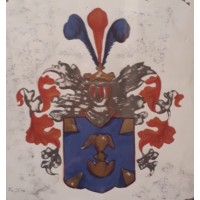Why we need to be more inspired by the stories we love by Andy Wilson
Why we need to be more inspired by the stories we love.
By Andy Wilson
“All the world’s a stage, and all the men and women merely players.”
William Shakespeare
One of the unintended consequences of 2020 is that we have watched more films and TV series than
ever before. Thank you Netflix. We all like to project ourselves into whatever we are watching, but how
much do we bring these stories back into our own lives? I watch my kids prancing around with their
plastic weapons and terrible kung fu moves and can see how inspired they are by their heroes. But as
adults, we seem much less affected.
Story is one the most powerful technologies in all of human development. But also one of the most
overlooked. Story shapes the way we make sense the world and explain events. Story is how we teach,
persuade, entertain, inspire, and amuse each other. Story provides a fundamental and universal
framework on which we ascribe meaning and intentionality.
Stories revolve around drama. They remind us that adversity lies at the centre of human experience,
and it is how we position and respond to that adversity that defines who we really are.
We are very familiar with the many literal roles we play out in life: leader, sub-ordinate, colleague, child,
sister, parent. There are reams of superficial guidance on “how to be a better x”.
But stories give us much deeper insight. Donald Miller reminds us that there are 4 fundamental roles
that turn up again and again in our stories. These 4 roles act as a blueprint for the way we can turn up
every day, no matter what our superficial role may be.
The Victim. Shaped by, and at the mercy of, external forces. Lacking the resources to excel or thrive.
Desiring of special attention, indulgence and (ultimately) being saved.
The Villain. Often shaped by pain or suffering from an earlier time. Unequipped with the necessary
moral compass or guidance, they believe that they can relieve their own pain if they impose it on others.
The Hero. Typically from an ordinary background. Called (often against their will) to an adventure of
self-discovery, overcoming internal and external ordeals, often involving vanquishing the villain and
saving the victim.
The Guide. Known for their higher wisdom and compassion. They help and advise the hero, usually in
the moment of crisis, often in unexpected and humble ways.
These labels are pejorative. Few of us admit to being victims, or willingly intend to play the villain. But
the reason these roles are universal in almost every story is because these roles exist within us all. If you
find yourself blaming your predicament on external events out of your control, then maybe there is a
whiff of victimhood in your approach. If you are thinking about turning the screw on your people and
suppliers because your paymasters are turning the screw on you, maybe there’s a bit of villain in you
(and hey, nice guys finish last, right?).
There is another important story role worth mentioning. The role of the passive extra, with no lines and
no part, drifting through the story without actively participating. God forbid if that is how we choose to
live our own story.
It is worth reflecting hard and honestly about your leadership style within this framework. What role do
you currently play in the story of your life? What role do others see you play in the story of their life?
What role would you like to play? What does it take to be a hero? Or a guide?
The reason so many of us are enthralled by “The Queen’s Gambit” lies in our emotional investment in
the lead character, Beth Harmon. Every person, every event, every force in Beth’s formative life
demanded that she become a victim. Yet she refused to become a victim and she prevailed, despite all
odds.
Perhaps this particular story resonated more in the year of Covid, a year where every event unfolding
was demanding that we too surrender and become victims. Can we prevail, or do we succumb? And as
leaders, what signals and examples are we setting for our teams and organisations?
So, for the next story you find yourself engrossed in, look hard the characters that you admire, and the
one’s you don’t, and ask yourself how you can model your own leadership behaviours.
Preferably without the kung fu kicks.



Comments
Post a Comment